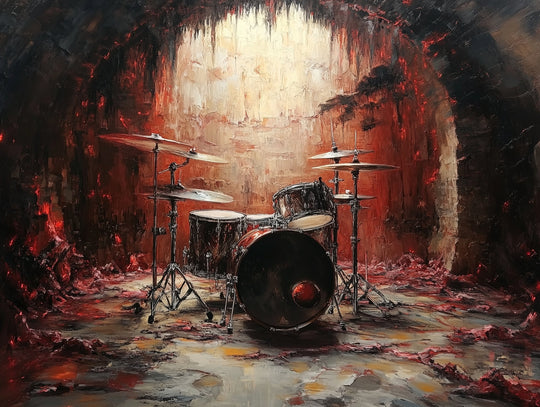10 Essential Tips for Crafting Perfect MIDI Drum Patterns
10 Essential Tips for Crafting Perfect MIDI Drum Patterns
Blog Article
MIDI drum styles are at the key of contemporary audio production. They let artists and companies to create dynamic, versatile beats that get a track's rhythm. Whether you're a beginner or a professional producer, knowledge the fundamentals of fabricating drum midi packs may raise your music production skills. This information addresses everything required to know—from fundamental concepts to sophisticated techniques—to hobby compelling drum habits designed to your music.
What Are MIDI Drum Patterns?
MIDI (Musical Instrument Digital Interface) drum styles are electronically developed sequences of drum defeats designed in a DAW (Digital Sound Workstation). Unlike recorded sound, MIDI information contains details about the moment, frequency, pace, and length of records, providing complete control around every aspect of the beat.
With MIDI, companies can try out countless drum kits, tweak rhythms, and layer seems to create beats for types ranging from hip-hop to digital to rock. The usefulness of MIDI makes it an important instrument for music production.

The Developing Blocks of a Drum Design
Developing a great MIDI drum sample begins with knowledge the the different parts of a drum equipment and their functions in surrounding beat:
Stop Drum: Forms the building blocks of the beat. It offers the thud or low-end strike that drives the rhythm.
Snare Drum:Brings energy and emphasis, often creating the snap noise noticed on the 2nd and 4th defeats in several genres.
Hi-Hats: These come in two forms (closed and open) and put groove and alternative with regular patterns.
Toms: Fill in transitions or include character to your patterns.
Accident and Experience Cymbals: Used for features and to tag transitions within a song.
Measures to Develop MIDI Drum Patterns
Step 1: Focus on a Fundamental Sample
Lay down a straightforward 4/4 beat. Use a stop drum on beats 1 and 3 and a snare on beats 2 and 4. Include regular hi-hats on every eighth note to help keep the flow moving. This ensures a powerful foundation.
Stage 2: Include Difficulty
Once your standard rhythm is in position, add variation. Add offbeat hi-hat visits, ghost records on the snare, or syncopation to make a dance that thinks alive and engaging.
Stage 3: Concentrate on Velocity and Humanization
One frequent trouble with MIDI drum habits is that they'll sound robotic if every note is performed at the exact same velocity. Adjust velocities to simulate the makeup of a genuine drummer's performance. Also, try out slight moment shifts to humanize the rhythm.
Stage 4: Integrate Fills and Changes
Drum floods are important for observing transitions between music sections. Use tom rolls, snare fills, or cymbal accidents to include enjoyment and movement to your habits, keeping listeners engaged.

Stage 5: Experiment with Genres
Discover various types to develop your understanding of drum patterns. Hip-hop defeats may possibly feature swung hi-hats and syncopated sneakers, while digital music often uses complicated grid-based coding and split percussion.
Tips for Elevating Your Defeats
Coating Your Sounds: Mix products or drum appears to generate richer, more textured beats.
Use Results Beautifully: Add reverb, wait, or retention to specific drum elements for a more polished sound.
Examine Actual Drummers: Analyze drum performances in your preferred songs to understand groove and flow habits better.
Open Countless Imagination with MIDI
Mastering MIDI drum habits lets you innovate and modify beats to meet the demands of any track. By mixing complex accuracy with innovative experimentation, you can art rhythms that get your music and keep a lasting impact. Begin exploring nowadays and tap to the boundless opportunities of MIDI for the drum production.
Report this page